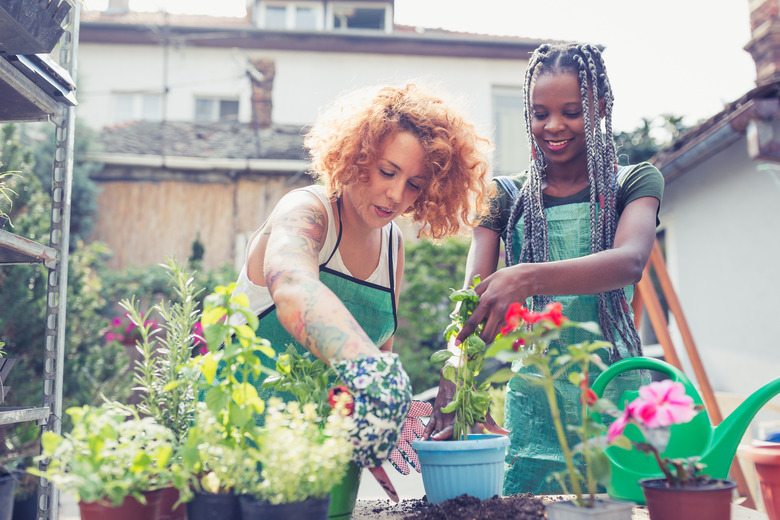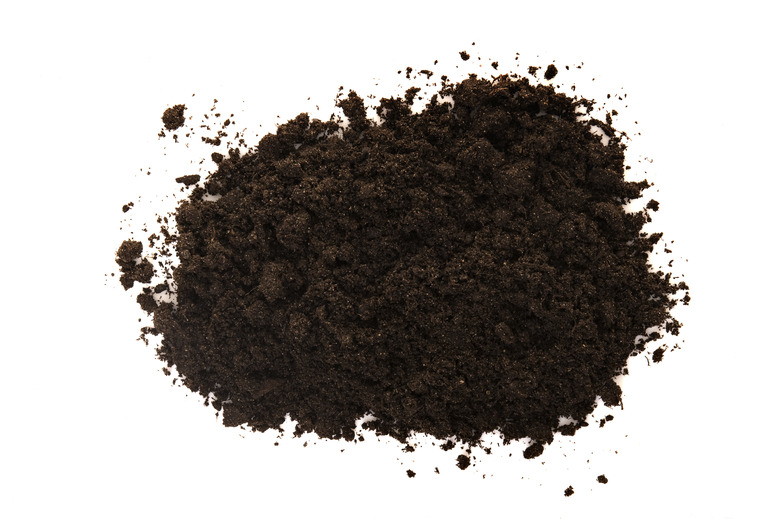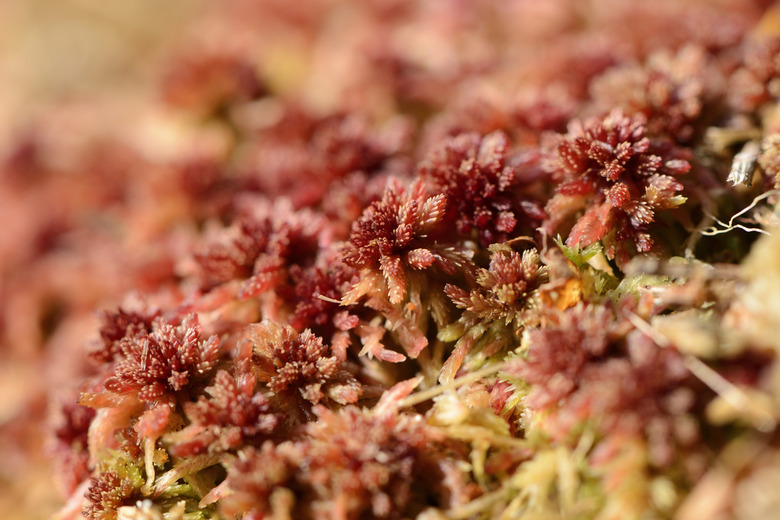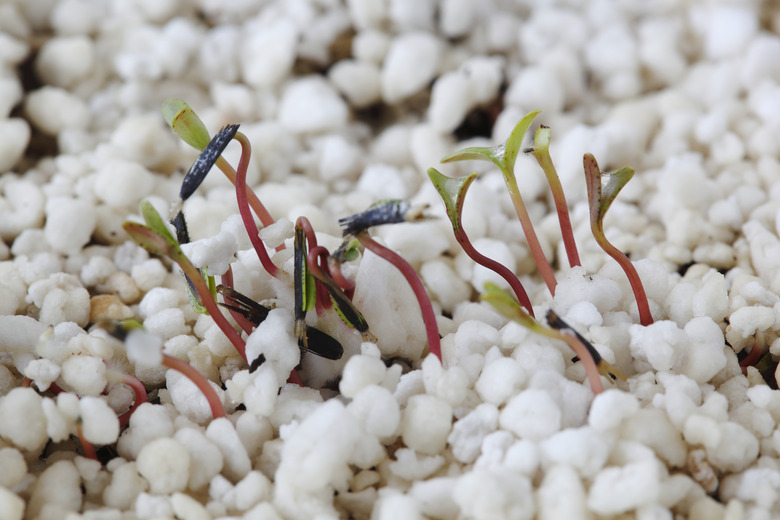How To Make Potting Soil
When it comes to container gardening, not all potting mediums are created equally. Topsoil or soil dug out of your yard may be too heavy and compact to grow plants from seed or seedlings in a container. A purchased pre-made potting mix contains a blend of materials specifically designed for container-bound plants, but it's just as easy to make your own mix from clean garden soil and several additives such as sand and peat moss. The best part of making your own potting-soil blend is you can adjust it to suit the needs of the plants, such as a mix that drains easily for cacti and other succulents.
How to Make a Soil-Based Potting Mix Blend
How to Make a Soil-Based Potting Mix Blend
Fresh garden soil, or a sterile loamy soil, serves as the main ingredient for making a dirt-based potting soil. But instead of digging soil out of your own garden or out of containers previously used for plants, start with a bag of soil clearly marked as sterile garden soil purchased from a garden center. Soil from your own yard or garden may contain plant pathogens, insects or weeds that may negatively affect your potted plants. This particular potting blend uses equal portions of all ingredients, so it's easy to mix as much as you need for a few potted plants or for a large container garden for a patio.
Things Needed
-
Wheelbarrow
-
Garden soil
-
Sphagnum peat moss
-
Clean all-purpose sand
-
Garden gloves
All of these materials are available at big-box home-improvement stores and large garden centers. Remember to mix ingredients based on volume, not weight, such as two of gallons soil and two gallons of sand.
- Pour the desired amount of garden soil into a large vessel such as a wheelbarrow. A wheelbarrow is ideal since it offers plenty of space to blend the dirt and add-ins without spilling.
- Mix in an equal amount of course, slightly damp sphagnum peat moss.
- Add an equal amount of all-purpose coarse sand. For a lighter mixture, use perlite or a garden-grade vermiculite instead.
- Work the mixture with gloved hands until it has the ideal blend: neither sticky, clumpy or gritty. If it feels too gritty, add more peat moss. If too sticky, add more sand, perlite or vermiculite.
Warning
Perlite or peat moss should be moistened before use, as it otherwise creates a dust that could be harmful if inhaled.
How to Make Soil-Free Potting Medium
How to Make Soil-Free Potting Medium
If you've purchased potted flowers or other plants recently, you may have noticed that some of them are rooted in an extremely lightweight medium with little or no soil in it. These soilless potting mediums drain better than soil-based mediums and offer less resistance to young shoots trying to make their way up through the medium, making it ideal for starting plants from seed or for planting delicate seedlings in containers.
Things Needed
-
Container large enough to hold the potting blend
-
Spaghnum peat moss
-
Vermiculite or damp perlite
-
Garden gloves
-
Spade or trowel
If making a large quantity of soil-free mix, the peat vermiculite or perlite will most likely be available in large bags at larger garden centers or online retailers. Small garden centers may stock these materials only in small (and expensive) bags.
- Set a mixing container in the work area. Choose a container large enough to hold your finished potting mix, with room for blending the ingredients.
- Pour the peat moss into the container. If making a blend to fill this specific container, use enough to fill it nearly halfway.
- Add an equal amount of vermiculite or damp perlite.
- Mix the ingredients together thoroughly with gloved hands, or with a garden spade or trowel. Add water as needed to moisten the mixture if planning to add plants to this container.
Tip
Feel free to adjust the homemade potting soil mixture to your liking. All materials are available, bagged, in garden centers.
Perlite and Vermiculite: When to Use Them
Perlite and Vermiculite: When to Use Them
While both soil amendments can help prevent the potting mix from becoming too dense or compact, they have notable differences, as well. Perlite, those small white balls often seen in pots containing flowers, does not retain water, so it's great for plants that require well-drained soil, such as cacti. It's also perfect for germinating seeds or starting new plants from cuttings.
Vermiculite is brown and expands a little when wet. Since it retains moisture, it's best for plants that love moist soil, such as tomatoes. A potting mix containing vermiculite is also ideal for seedlings that are strong enough to transplant into a larger, permanent pot.
No matter which potting-soil amendment you choose, make sure the container has drainage holes. Too much rain or overwatering could harm the plant or cause root rot if the water has no means of escaping the container. Place a tray beneath the containers to catch excess water if setting the containers on wood surfaces or if the containers are used indoors.
Square-Foot Gardening Blend
Square-Foot Gardening Blend
If gardening in raised beds or trying to grow a sizable garden in limited outdoor space, a square-foot-gardening potting mix is the way to go. This type of blend uses equal portions of compost, peat moss and vermiculite and is designed to help produce thrive even in confined spaces such as containers and rooftop garden beds. It is lightweight and drains well, so it's ideal for both seeds and seedlings. It's also easy to mix when needed, since you won't need to remember specific quantities for each ingredient.
Things Needed
-
Wheelbarrow or tarp
-
Peat moss
-
Vermiculite
-
Shovel or pitchfork
If it's possible, use a mixture of several different types of compost in your square foot gardening mix. If buying it in bulk bags, for example, you can mix composted cow manure, composted sheep manure, and leaf compost together. Fully composted manures do not have an unpleasant smell, but this mixture is best for large outdoor container gardening.
- Place a wheelbarrow near your work area. If you don't have one, spread a tarp out on level ground.
- Pour compost into the wheelbarrow or tarp. Break up any large clumps with a shovel or pitchfork.
- Add an equal amount of peat moss.
- Pour in an equal amount of a medium or coarse vermiculite.
- Blend the ingredients together thoroughly using a shovel or pitchfork. If making a small batch, gloved hands will suffice.



